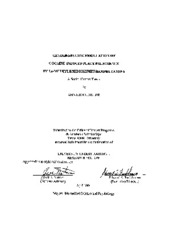| dc.creator | Diller, Anna Jean | |
| dc.date.accessioned | 2013-02-22T20:41:42Z | |
| dc.date.available | 2013-02-22T20:41:42Z | |
| dc.date.created | 2004 | |
| dc.date.issued | 2013-02-22 | |
| dc.identifier.uri | https://hdl.handle.net/1969.1/ETD-TAMU-2004-Fellows-Thesis-D55 | |
| dc.description | Due to the character of the original source materials and the nature of batch digitization, quality control issues may be present in this document. Please report any quality issues you encounter to digital@library.tamu.edu, referencing the URI of the item. | en |
| dc.description | Includes bibliographical references (leaves 28-32). | en |
| dc.description.abstract | In contemporary North-American culture, two frequently combined drugs possessing abuse liability are cocaine and "ecstasy" (+/- 3,4-methylenedioxy-methamphetamine [MDMA]). Each drug is a stimulant acting on brain dopamine sites, i.e., cocaine acts to block reuptake of dopamine while ecstasy increases voltage-gated release of the neurotransmitter. With recurrent use, disturbances in dopamine regulation may alter the reward properties of these drugs when presented singularly or concurrently. Because an increasing number of drug abusers are female (currently, females comprise nearly one-third of the drug-abusing population), possible differential drug sensitivity in females has emerged as an issue and could affect treatment programs. This is the first study to test for behavioral alterations across gender with concurrent administration of these frequently abused drugs. It was hypothesized that elevated levels of extracellular dopamine associated with a combined exposure regimen would increase CPP relative to the case where each drug was administered alone, and it was predicted this effect would be amplified in females relative to males. Adult male and female rats received one of three doses of cocaine (0 mg/kg, 2.5 mg/kg, 5 mg/kg) followed by MDMA (0 mg/kg, 5 mg/kg, 10 mg/kg) and were then tested in a CPP paradigm. Specifically, conditioned place preference (CPP), a commonly used model for studying the role of contextual cues in drug reward and drug-seeking, was employed in this investigation that sought to explore possible synergism between cocaine and MDMA (ecstasy) in male and female rats. These results, however, suggest a biphasic effect of MDMA reward and a linear correlation between cocaine dose and reward properties. Concurrent administration displays antagonism of each drug. Females displayed less overall sensitivity than males except at the highest level of MDMA. This suggests that chronic drug abuse potential may vary according to both drug dose and gender. | en |
| dc.format.medium | electronic | en |
| dc.format.mimetype | application/pdf | |
| dc.language.iso | en_US | |
| dc.publisher | Texas A&M University | |
| dc.rights | This thesis was part of a retrospective digitization project authorized by the Texas A&M University Libraries in 2008. Copyright remains vested with the author(s). It is the user's responsibility to secure permission from the copyright holder(s) for re-use of the work beyond the provision of Fair Use. | en |
| dc.subject | biomedical science and psychology. | en |
| dc.subject | Major biomedical science and psychology. | en |
| dc.title | Gender-specific modulation of cocaine-induced place preference by 3,4-methylenedioxymethamphetamine | en |
| thesis.degree.department | biomedical science and psychology | en |
| thesis.degree.discipline | biomedical science and psychology | en |
| thesis.degree.name | Fellows Thesis | en |
| thesis.degree.level | Undergraduate | en |
| dc.type.genre | thesis | en |
| dc.type.material | text | en |
| dc.format.digitalOrigin | reformatted digital | en |


